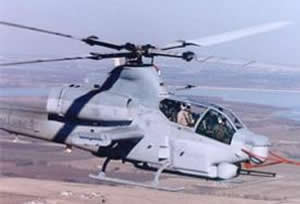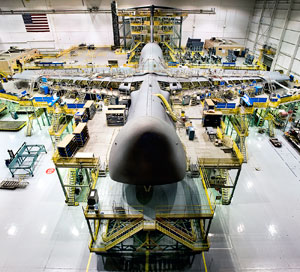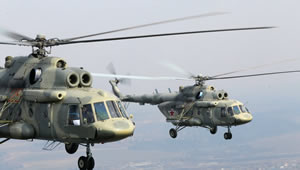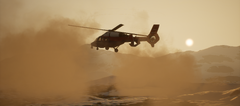- 3 replies
- 1,696 views
- Add Reply
- 0 replies
- 1,253 views
- Add Reply
- 1 reply
- 1,312 views
- Add Reply
- 23 replies
- 3,657 views
- Add Reply
- 5 replies
- 2,170 views
- Add Reply
- 6 replies
- 2,057 views
- Add Reply
Lased and Confused

By Erik,


Lased and Confused: Off-the-Shelf Infrared Lasers Could Ward Off Missile Attacks on Military Helicopters
Scientific American -- By Charles Choi
A newly developed broad-spectrum laser mounted on choppers could effectively dazzle shoulder-launched antiaircraft weapons in flight, and prevent them from finding and destroying their targets.
Helicopter-mounted lasers that can dazzle and defend against heat-seeking missiles are now under development, researchers reveal.
The military o
Saab Courts Asia, Eastern Europe to Save Gripen Warplane

By Erik,


Saab Courts Asia, Eastern Europe to Save Gripen Warplane
Bloomberg -- By Howard Mustoe and Ola Kinnander
Saab AB is stepping up a campaign to sell its Gripen warplane in Asia and eastern Europe as Switzerland’s decision to delay a $1 billion fighter purchase threatens to curtail production of the 1,320 mile-per-hour jet.
Orders from Bulgaria, Romania and Slovakia and a follow-on contract from Thailand are “major near-term opportunities” for the Gripen, which competes with models fr
C-5 Becomes A ‘Superstar’

By Erik,


C-5 Becomes A ‘Superstar’
Lockheed Martin
MARIETTA, Ga., September 2nd, 2010 -- Another Lockheed Martin [NYSE: LMT] C-5 is being transformed into the world’s most capable strategic airlifter, the C-5M Super Galaxy. With more than 70 improvements, the Super Galaxy is rapidly becoming the linchpin of success in achieving global reach. The next C-5M Super Galaxy will be delivered on Sept. 30, 2010 and will be stationed at Dover Air Force Base, Del. The C-5M Super Galaxy recently achiev
Video Game Pulled Globally From Military Stores Over Taliban Inclusion

By FastCargo,


From Kotaku.com
As all stores located on Army and Air Force bases will no longer be allowed to sell Electronic Arts' upcoming military shooter Medal of Honor because an aspect of the game includes playable Taliban characters.
The Army and Air Force Exchange Services has confirmed to Kotaku that they requested the game pulled from the 49 GameStop's located on bases in the continent U.S. The ban, an AAFES representative told Kotaku, also extends to all military PXs worldwide.
In an ema
Russia to sell Mi-17 helicopters to Argentina

By Erik,


Russia to sell Mi-17 helicopters to Argentina
RIA Novosti. Alexei Kudenko
Russia has signed a "historic" contract on Mi-17 helicopter deliveries to Argentina, a member of a Russian delegation said on Wednesday.
"The contract provides for the delivery of two Mi-17 helicopters to the Argentinean Air Force," the official said, adding that the contract was signed on Tuesday evening.
The sale is the first time the Argentinean military has bought Russian military hardware, he sai
First Flight for New HELLFIRE II Missile Design

By Erik,


First Flight for New HELLFIRE II Missile Design
Lockheed Martin
ORLANDO, Fla: Lockheed Martin's new multi-functional AGM-114R Hellfire II missile scored a direct hit during its first proof-of-principle (POP) flight test recently at Eglin Air Force Base, FL.
The Hellfire II design, now entering the qualification phase, features a new multi-purpose warhead that enables a single missile to cover all of the target sets of the current laser-guided Hellfire II variants.
The POP








